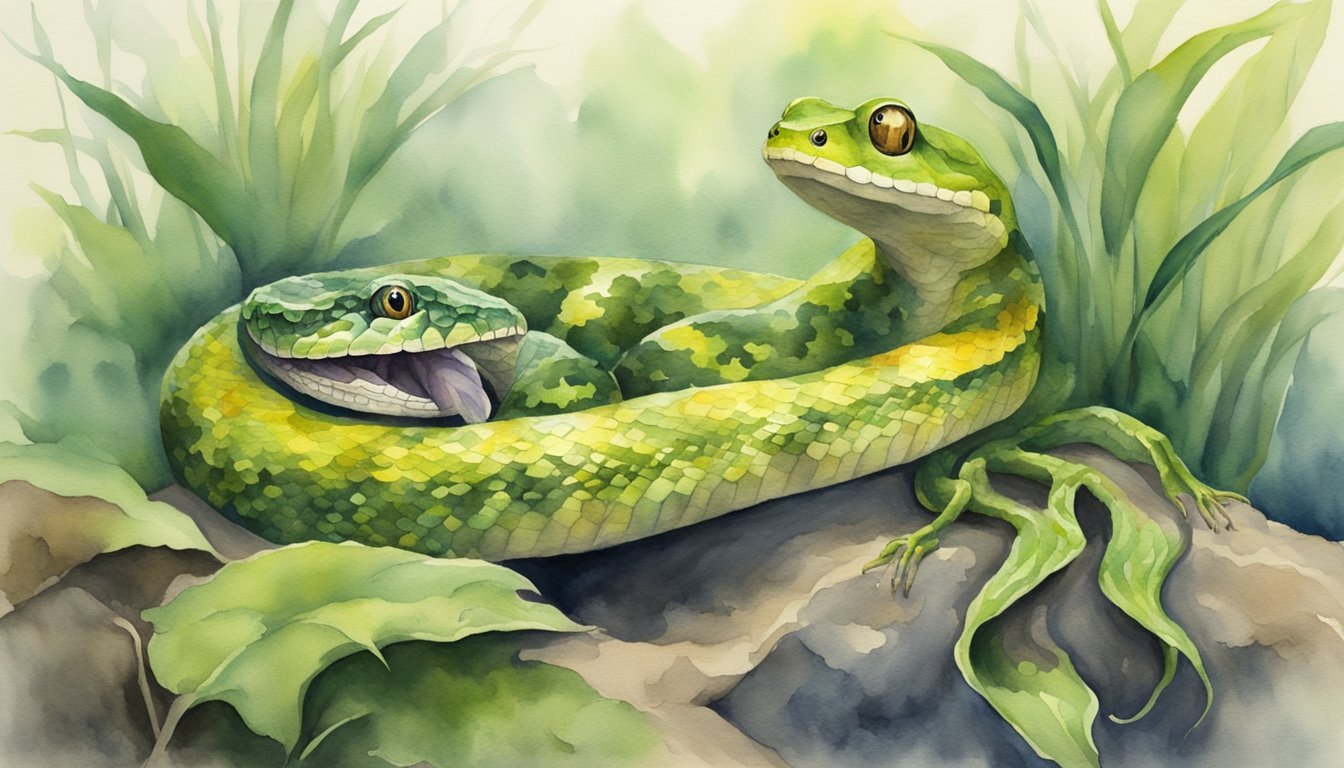Understanding Venomous and Poisonous Classifications
The distinction between venomous and poisonous organisms is crucial for understanding how they use toxins for defense or predation. To grasp the significance of these terms in biology, we explore the defining features and roles they play in nature.
Key Distinctions Between Venomous and Poisonous Organisms
Venomous animals are those that inject venom into their prey or predators as a defense mechanism or to capture food. Venom is typically delivered through a bite or sting, directly entering the bloodstream of the target. On the other hand, poisonous organisms, such as the poison dart frog, contain toxic substances that can be harmful when touched or ingested, rather than injected. Thus, an animal or plant being hazardous to consume or touch is the hallmark of a poisonous being.
Common Characteristics of Venomous Creatures
Venomous creatures usually possess specialized anatomical structures for venom delivery, such as fangs, stingers, or spines. These adaptations have evolved as effective tools for predation or as a deterrence against predators. For instance, snakes use their fangs to inject venom, which contains toxins that can disrupt the nervous system of their prey. Scientists study these unique traits to understand how venomous animals have adapted to their environments.
Typical Traits of Poisonous Animals and Plants
Animals that are poisonous, such as certain species of frogs, carry toxins within their skin and organs. Encounter with these toxins, through consumption or absorption, can be lethal. Not limited to animals, many plants are also poisonous, as they contain toxic compounds to protect themselves from herbivores. These toxins serve as a powerful defense mechanism, dissuading animals from eating them.
The Role of Toxins in Nature
Toxins have a profound role in the dynamics of ecosystems. Venomous and poisonous species use toxic substances to secure their place in the food web, either by deterring predators or by neutralizing their prey. Biologists have observed that species with potent toxins often have fewer natural predators, highlighting the effectiveness of their defensive strategies. Their presence also influences the behavior and evolution of other organisms in their ecosystem, underlining the complexity of natural biological systems.
Mechanisms and Effects of Venom and Poison

Understanding the mechanisms and effects of venom and poison is essential for comprehending how various creatures defend themselves or incapacitate their prey. These biological tools offer insights into a world where survival often depends on the ability to deter predators or immobilize a target.
Venom Delivery Systems in Animals
Among venomous creatures, snakes are particularly well-known for their efficient venom delivery systems. Equipped with specialized fangs, snakes like cobras and rattlesnakes inject venom directly into their prey. Similarly, spiders also employ fangs to administer venom. Certain species, such as the spitting cobra, have adapted to accurately eject venom towards their aggressor’s eyes, causing pain and temporary blindness. Other animals like bees and wasps use a stinger as their mode of venom delivery. Even mammals like the platypus can deliver venom; males have a spur on their hind limbs that is connected to a gland capable of secreting venom.
How Poisons Are Introduced to Organisms
Poisons, on the other hand, are usually introduced to organisms through ingestion, inhalation, or absorption. Plants like poison ivy rely on contact, causing dermatitis when touched. Toxic amphibians, such as poison dart frogs, possess glands that secrete potent toxins that deter predators. These poisons can be ingested or absorbed through another animal’s skin or mucous membranes. For example, the monarch butterfly caterpillar consumes the toxic milkweed plant during its larval stage, which makes it poisonous to potential predators.
Impact of Toxins on the Prey’s Body
Toxins delivered through venom or poison affect the prey’s body in various ways. Neurotoxins, such as those found in snake venom, can disrupt nerve function and lead to paralysis. Other toxins like cardiotoxins target the heart. When ingested, poisons like cyanide or tetrodotoxin result in metabolic disturbances, leading to respiratory failure and death. The potency of these toxins serves not just to immobilize prey but also to digest it; enzymes and proteins in the venom or secreted by the glands of amphibians and insects start breaking down the prey’s tissues.
Evolutionary Advantages of Producing Poisons and Venoms
The production of poisons and venoms provides significant evolutionary advantages. Toxins can be a defense mechanism, deterring predators from consuming organisms that carry them. Creatures living in competitive environments, such as jellyfish, use venom to secure food and space. Poisons can also function as a pre-emptive strike against herbivores in the case of plants. The monarch butterfly is one example of an insect that uses its toxic secretions as a defense. These evolutionary traits have allowed many venomous and poisonous species to thrive in various ecosystems.

